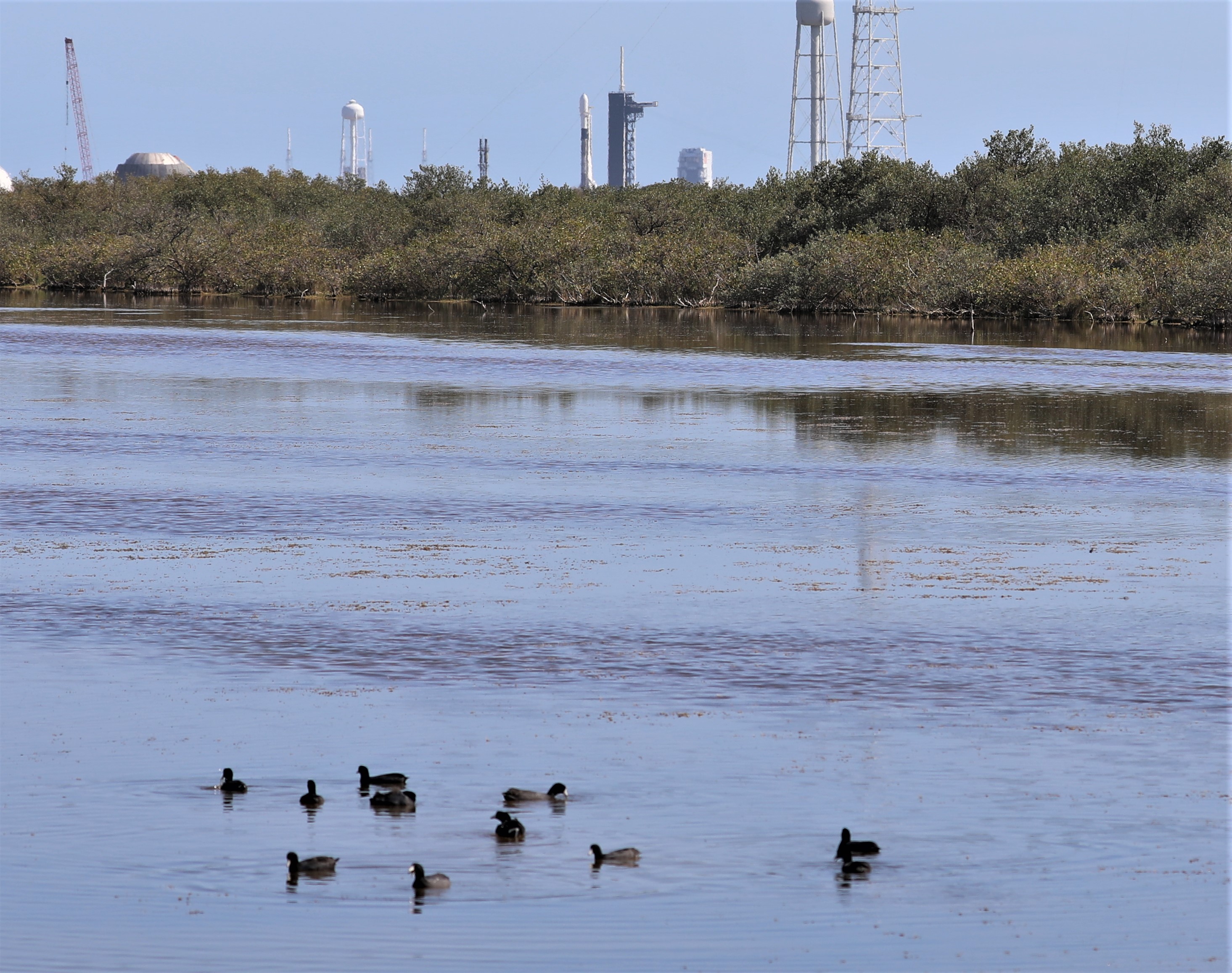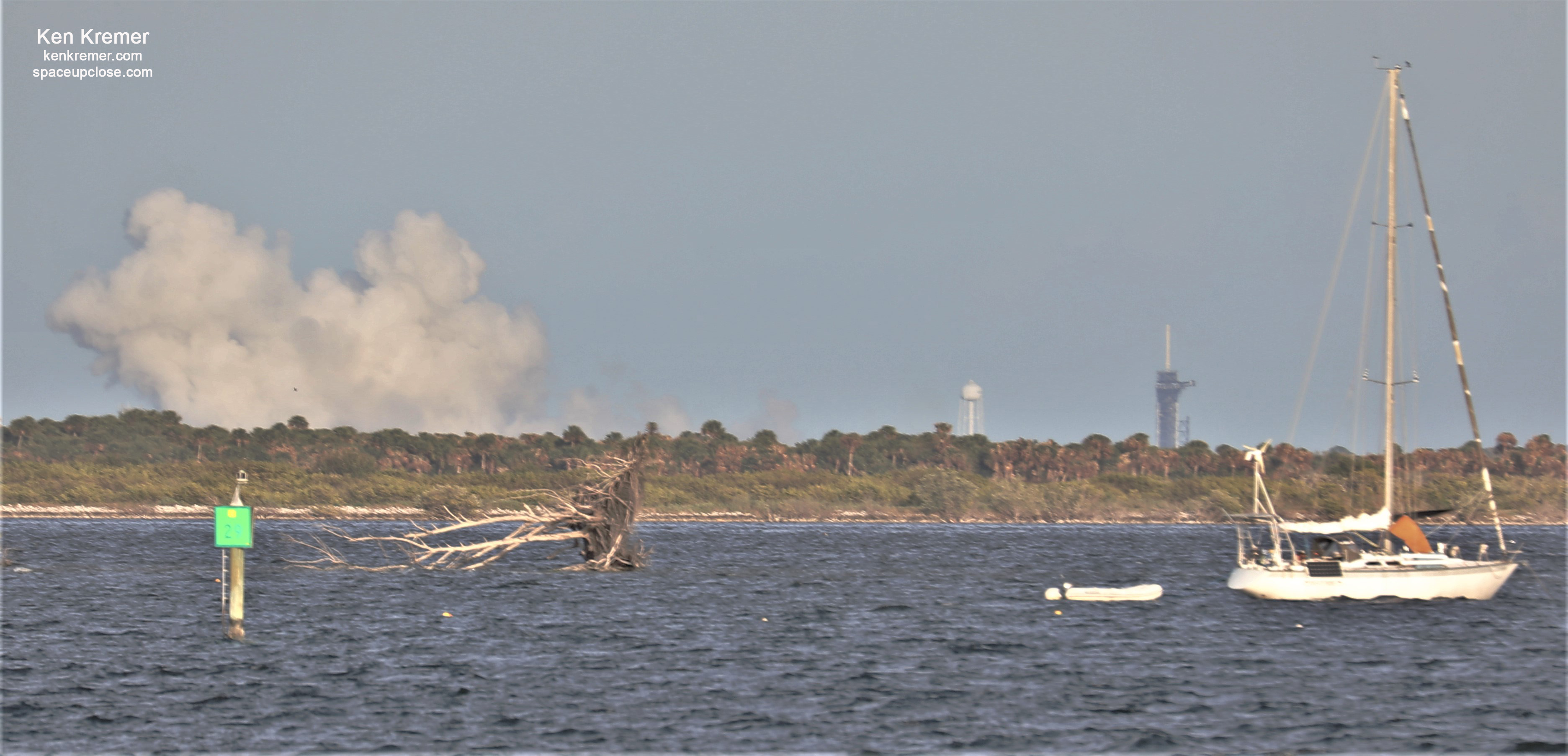
For SpaceUpClose.com & RocketSTEM
KENNEDY SPACE CENTER, FL – After multiple delays SpaceX engineers finally completed a successful static fire test of the Falcon 9 first stage engines on Friday the 13th this evening for the upcoming sixth Starlink launch on Sunday from the Florida Space Coast on a milestone mission– amidst the ever growing coronavirus pandemic that has forced closures of public places, school and travel hubs all across the US and the world but not forced a rocket cancellation.
But the late in the day test firing also forced a 1 day postponement of the launch from Saturday morning March 14 to Sunday morning March 15.
Nevertheless, the weather outlook is superb.
I watched the engine test Friday late afternoon from nearby in Titusville, Fl at the Max Brewer Bridge about a dozen miles away across the Indian River lagoon and observed the exhaust plume and vapor cloud emanating from the bottom of the booster.
The exhaust was easily visible and wafting overhead and dissipating quickly in the winds about 12 miles away.
Notably this recycled first stage counts as the 1st 5th launch of a ‘flight-proven’ Falcon 9.
So come on out and enjoy a Sunday morning treat in the form of a sure to be spectacular SpaceX rocket launch on this truly milestone 5th flight mission of the upgraded Block 5 booster B 1048.
It will also be the second flight with reused payload fairings.
The payload comprises the sixth batch of 60 SpaceX built and owned Starlink broadband satellites launching to LEO with an overall mass of about 7.7 tons.
Liftoff of the 6th Starlink mission is now targeted for 9:22 a.m. EDT, 1322 GMT, Mar. 15 from Launch Complex-39A (LC-39A on NASA’s Kennedy Space Center, FL.
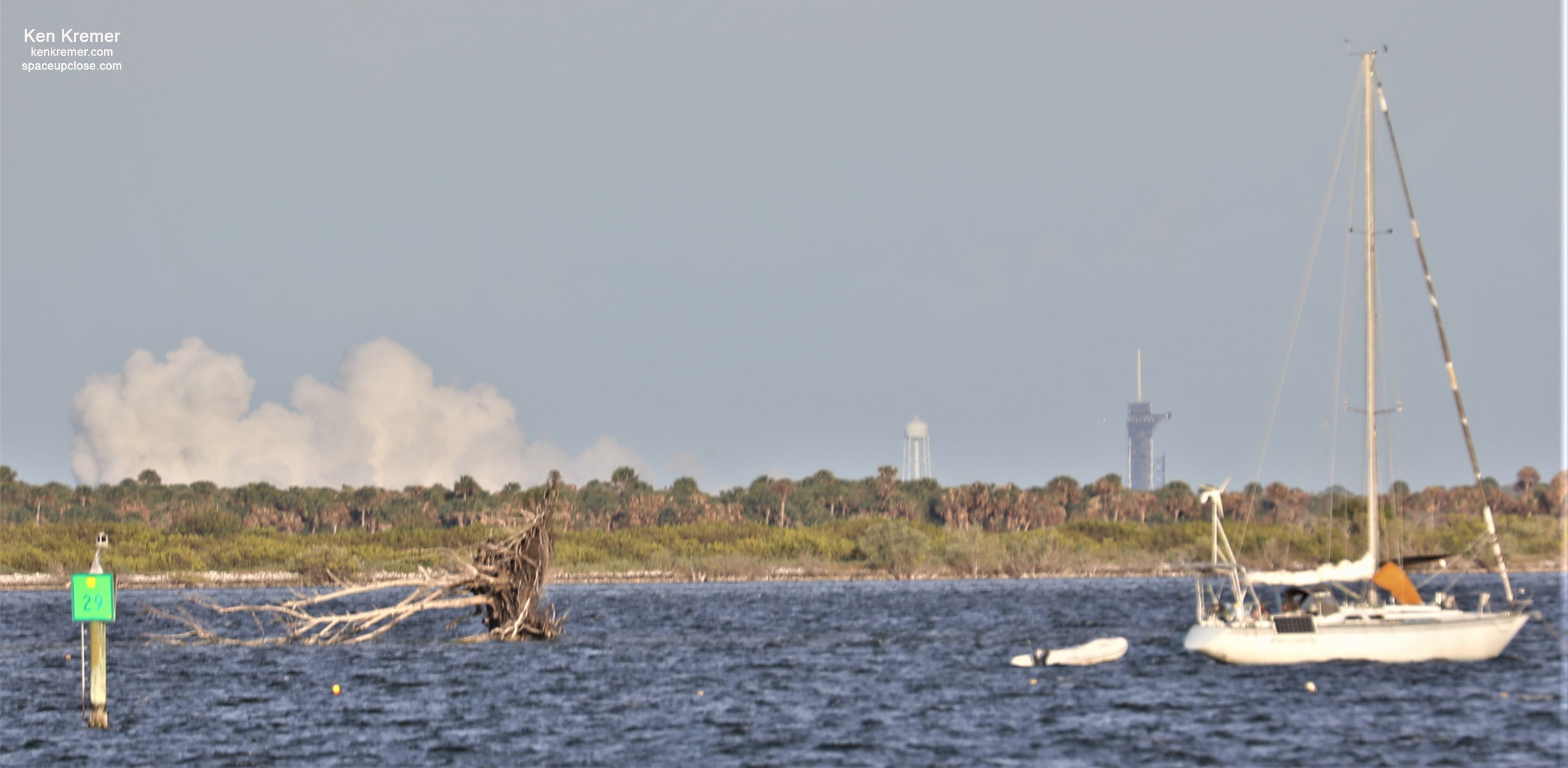
The brief hold down hotfire test of the fully integrated SpaceX Falcon 9 first stage rocket and Merlin 1D engines raised vertical took place today at 6:30 p.m. EST on Launch Complex-39A (LC-39A on NASA’s Kennedy Space Center, FL. under beautiful evening skies on Florida’s Space Coast.
Enjoy our eyewitness photos of the static fire test witnessed by Space UpClose from across the Indian River in Titusville, FL at the Max Brewer Bridge precisely at 6:30 p.m. EDT, Mar 13 – from about 12 miles away.
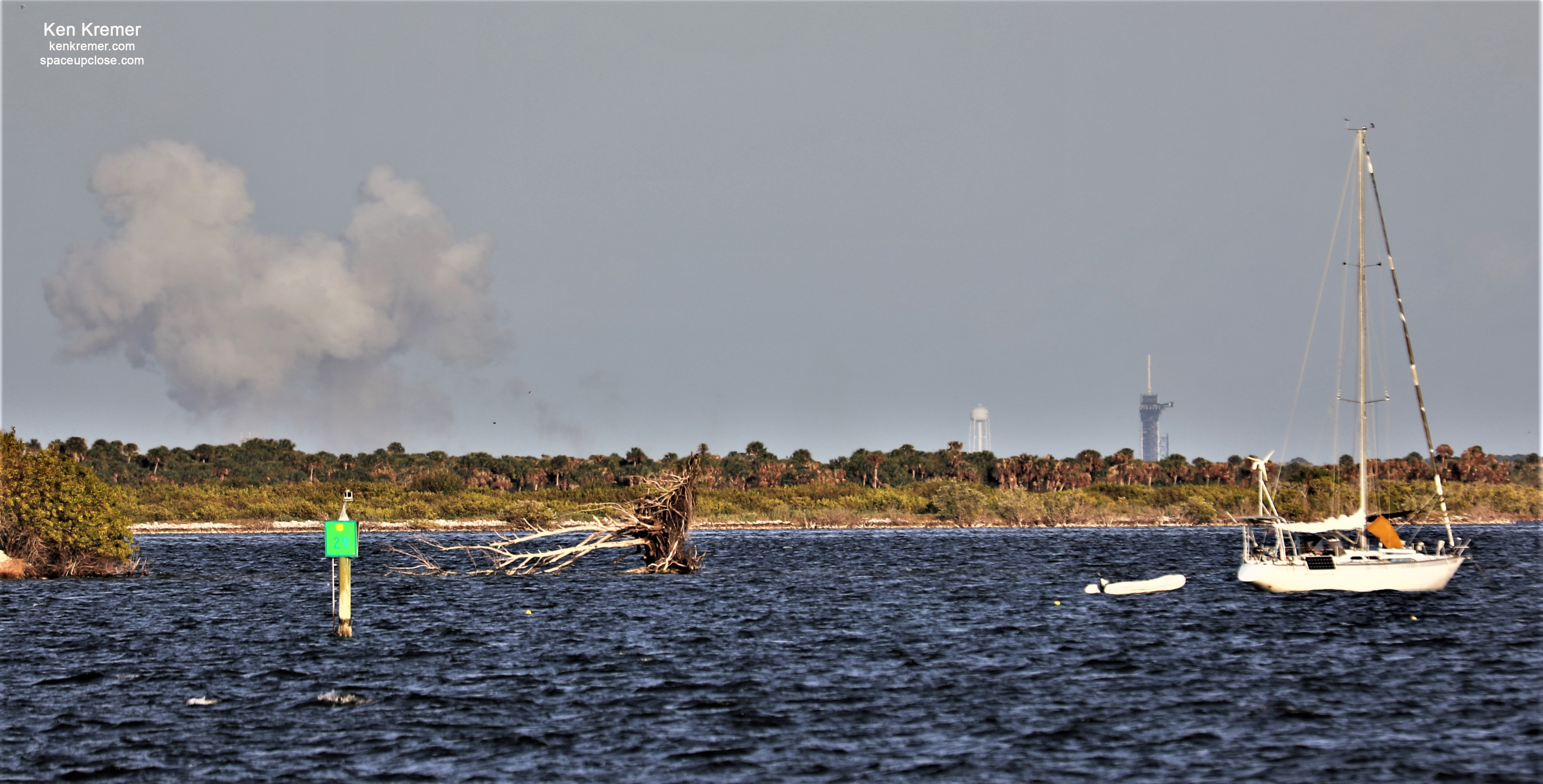
About an hour later SpaceX tweeted a confirmation of a good test result.
“Static fire test of Falcon 9 complete—targeting Sunday, March 15 at 9:22 a.m. EDT, 13:22 UTC, for launch of 60 Starlink satellites from LC-39A in Florida,” SpaceX announced.
“Falcon 9’s first stage supporting this mission has flown to orbit four times.”
“The fairing previously flew on the Starlink launch in May 2019.”
Falcon 9’s first stage supporting this mission has flown to orbit four times pic.twitter.com/bICKcH9h7y
— SpaceX (@SpaceX) March 13, 2020
The fairing previously flew on the Starlink launch in May 2019 pic.twitter.com/AtYq6Omuku
— SpaceX (@SpaceX) March 13, 2020
Notably the Merlin engine test involved an extremely rare combination of the fully integrated launch stack comprising the two stage SpaceX Falcon 9 rocket with the nose cone bolted on top with the payload of SpaceX Starlink commercial internet satellites encapsulated inside.
SpaceX has been willing to do the static fire with their own payload atop the Falcon 9.
The primary concern is for cumulus clouds.
The two stage Falcon 9 rocket stands 229 feet (70 meters) tall.
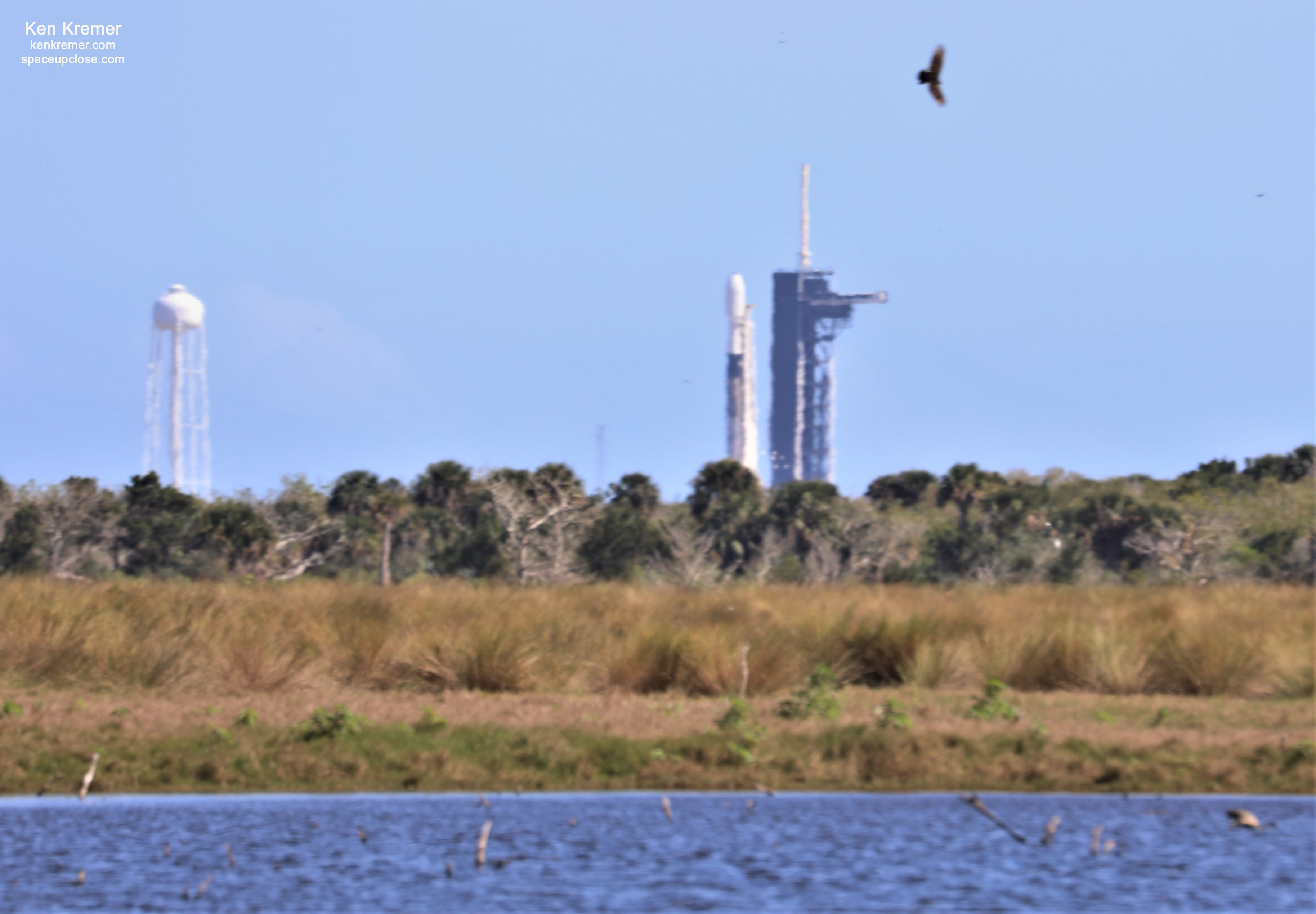
The integrated stack was rolled out from the hangar to pad 39A and raised erect on Friday morning.
The hold down static fire test is routinely carried by SpaceX to ensure all is ready with the rocket.
Vigorous venting of liquid oxygen was observed in the final minutes of the countdown to the test as is normal
During Sunday’s hold down static fire test, the rocket’s first and second stages are fueled with liquid oxygen and RP-1 propellants just like an actual launch, and a simulated countdown was carried out to the point of a brief engine ignition test of all nine Merlin 1D first stage engines lasting around 3 seconds or so.
SpaceX engineers briefly ignited all 9 Merlin 1D engines on their ‘flight-proven’ Falcon 9 first stage booster for a hold down static fire test at pad 39A generating 1.7 million pounds of thrust to affirm its readiness for launch on March 15
My SpaceX Starlink static fire photos featured at WKMG CBS 6 TV News Orlando:
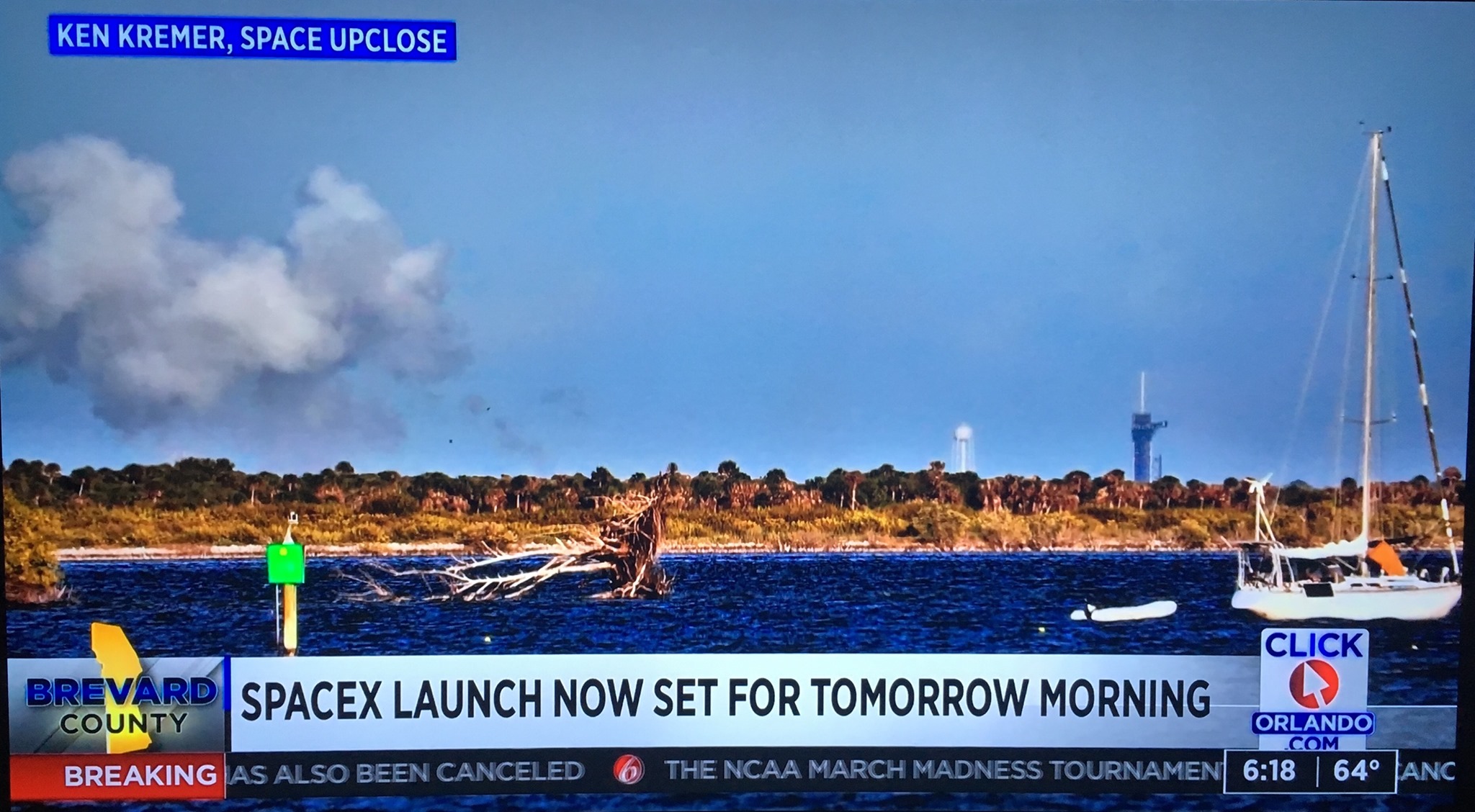
The launch window is ‘instantaneous’ meaning any delay for weather or technical reason forces a minimum 1 day scrub.
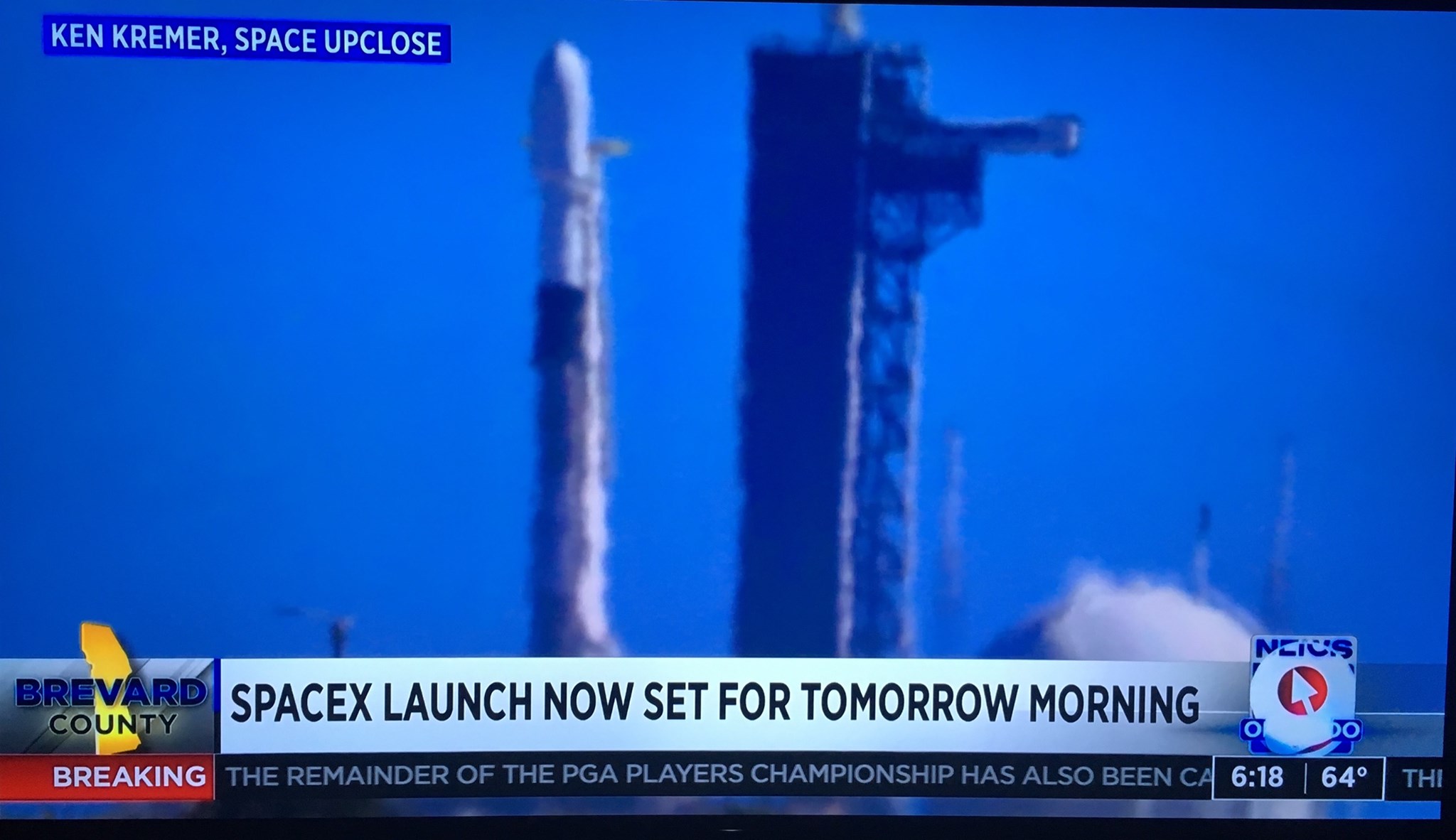
Watch Ken’s continuing reports about onsite for live reporting of upcoming and recent ULA and SpaceX launches including Starlink, Solar Orbiter, In-Flight Abort, Mars 2020 and more at the Kennedy Space Center and Cape Canaveral Air Force Station.
Stay tuned here for Ken’s continuing Earth and Planetary science and human spaceflight news:
ww.kenkremer.com –www.spaceupclose.com – twitter @ken_kremer – email: ken at kenkremer.com
Dr. Kremer is a research scientist and journalist based in the KSC area, active in outreach and interviewed regularly on TV and radio about space topics.
………….
Ken’s photos are for sale and he is available for lectures and outreach events
Ken has created hundreds of widely published Mars rover mosaics and lectures also about NASA’s Mars rovers
Ken’s upcoming outreach events:
Mar 14 7 PM; Quality Inn Kennedy Space Center, Titusville, FL. “SpaceX CRS-20, IFA and Starlink launch, ULA Solar Orbiter launch.” Free. In hotel lobby. Photos for sale
